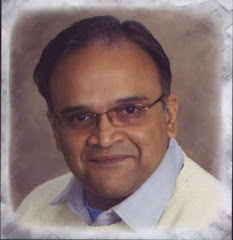



Nobody is sure of Pasupuleti Kannamba's date of birth. Various forums mention the year as 1910, 1912 and 1913. However, in an interview toPesum Padam in October 1949, Kannamba said her date of birth was October 5, 1911, which makes this her centenary year. It is probably the earliest recorded interview of hers, giving personal details. Here her daughter-in-law Kalavathy gives insights into the legendary actor-producer's life.
Kannamba was born in Cuddapah to Lokamba and M. Venkanarasaiah, a Government contractor. She was their only child and grew up with her maternal grandparents in Eluru. Her grandfather, Nathamuni Naidu, was the village doctor. Her grandmother doubled as the village nurse. Even as a child she could sing well and was taught Carnatic music. Her grandfather who was a lover of literature and poetry supervised her education.
ENTRY INTO THEATRE
In 1927, when she was 16, she attended a play, titled “Harichandra”, staged by the Narala Nataka Samajam in Eluru. In the play, the actor who played Chandramathi sang and cried herself hoarse, but the audience laughed. Kannamba shouted that she should perform better. Upset, the actor said acting was not easy and dared the girl to try it. Kannamba jumped onto the stage, sang, acted and moved the very same audience to tears — a precursor of things to come. From the very next day, she became the leading actor of the drama company and went on to play Anusuya, Savithri and Yasodha to great appreciation.
One of the organisers of this drama group was K. P. Nagabhushanam. He fell in love with Kannamba and they married in April 1934 — this was his second marriage. The same year the couple launched their own drama company called Sri Rajarajeswari Natya Mandali and performed all over the Madras Presidency and the Nizam's Territories. The next step was obvious. A. Ramaiah of Star Combines approached her for the role of Chandramathi in their production “Harichandra”, to be shot at Shalini Cinetone, Kolhapur. She accepted the offer and thus her film career was launched.
The Saraswathi Talkie Company from Bezwada (Vijayawada) approached her for the title role in “Draupadi Vastrapaharanam” (1936) again to be shot in Kolhapur. In “Kanakadhara” shot at Vel Pictures, her portrayal of pathos got her rave reviews and she inched her way to stardom. She partnered with H. M. Reddi and B. N. Reddi in their production “Gruhalakshmi” (1938). She also acted in “Kalidas” made by Jaya Films, which became Shobanachala Studios and Venus Studios much later. In partnership with Saraswathi Talkies, she made “Chandika” and played the title character, displaying a gamut of emotions — anger, hatred and passion all of which were new to her tragedy queen image.
When Rajagopal Pictures wanted to make “Krishna Thoothu” at the Motion Picture Producers Council (later Gemini Studio), director Raghupathy Prakash approached her for her first Tamil film. Her dialogue delivery left much to be desired and her pronounced Telugu accent was one of the reasons why the film failed. Thankfully, the producers of the M. K. Thyagaraja Bhagavathar classic “Ashok Kumar” approached her, despite the earlier debacle, and she delivered screenwriter Elangovan's lines in Tamil so perfectly that she became the automatic choice for the title role in the 1941 film, “Kannagi”.
By this time, she and her husband had started their own banner, Sri Rajarajeswari Film Company. She learnt Bharatanatyam to dance to MKT's singing, and this “ivar paada – avar aada” type of scene was so well received by the audience that it became a trendsetter.
ICONIC PERFORMANCE
In the Jupiter Films production of “Kannagi”, directed by R. S. Mani and written by Elangovan, she handled the literary and poetic Tamil without compromising on emotion, diction or cadence. Her performance in that film remains iconic. Kannamba became synonymous with Kannagi.
The question and answer in song between her and U. R. Jeevaratnam in this film became a pattern that many movies later followed. The music director of this film S. V. Venkatraman (who too celebrates his centenary this year) got this break because he was already composing for Kannamba's home production “Thalli Prema”. He went on to give classics such as “Meera”.
A pious person, Kannamba performed pooja every day before leaving for her film shoots. She was not blessed with children and adopted a son and a daughter. The daughter Rajarajeswari married director C. Pulliah's son, C. S. Rao, also a director. Kannamba's son was a tabla player. Her performance as the Queen Mother in “Manohara” was another highpoint in her career of over 150 films as an actor and over 25 films as a producer.
Veteran actress Anjalidevi recalls how helpful Kannamba was to aspiring actresses. “She taught us how to deliver dialogues in Tamil and even simple things like how to greet people with a Namaskaram. She was the inspiration for many Telugu-speaking actors to enter the Tamil film world.”
Kannamba passed away on May 7, 1964. Kannamba proved that you can excel as an actor in any language, provided you decide to learn it — a lesson many today need to learn.
(This was published in the Hindu Metro Plus of 1st October 2011.)



